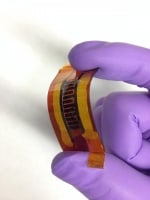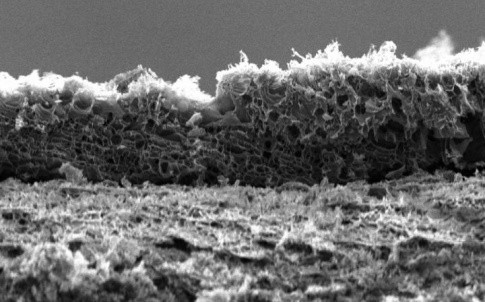The process, which turns common polymers into graphene, may also have applications in catalysis and the manufacture of lithium-ion batteries and solar cells.

The Rice team, led by chemist James Tour, makes capacitors by etching patterns of interlocking fingers into flexible films of polymers using commercial lasers. The heat of the laser burns away everything but the carbon skeleton of the polymer to a depth of about 20µm, leaving behind a foamy matrix of interconnected graphene flakes.
They have found that if the polymer is first doped with boron, by dissolving the element into polyamic acid then polymerising this into polyimide, the boron-infused graphene supercapacitor resulting from the laser treatment has four times the charge-storing ability and five to ten times the energy density of the boron-free version. The process can be used in bulk-scale, roll-to-roll manufacture of supercapacitors, which can be charged quickly with large amounts of energy that can then be released in a burst.

The new supercapacitors were stable over 12,000 charge-discharge cycles, retaining 90 per cent of their capacitance, Tour’s team explains in a paper in the American Chemical Society journal ACS Nano. These properties survived 8000 bending cycles with no loss of performance.
“What we’ve done shows that huge modulations and enhancements can be made by adding other elements and performing other chemistries within the polymer film prior to exposure to the laser,” Tour said. “Once the laser exposes it, those other elements perform new chemistries that really increase the supercapacitor’s performance. This is a step in making these even more amenable for industrial applications.”





JLR teams with Allye Energy on portable battery storage
This illustrates the lengths required to operate electric vehicles in some circumstances. It is just as well few electric Range Rovers will go off...